
|
Hertzsprung-Russell Diagram:
| Readings: Schneider & Arny: Units 50, 58 |
| (Audio Lecture) |
In 1905, Danish astronomer Einar Hertzsprung, and independently American astronomer Henry Norris Russell, noticed that the luminosity of stars decreased from spectral type O to M. They developed the technique of plotting absolute magnitude for a star versus its spectral type to look for families of stellar type.
These diagrams, called the Hertzsprung-Russell or HR diagrams, plot luminosity in solar units on the Y axis and stellar temperature on the X axis, as shown below.

Notice that the scales are not linear. Hot stars inhabit the left hand side of the diagram, cool stars the right hand side. Bright stars at the top, faint stars at the bottom. Our Sun is a fairly average star and sits near the middle.
A plot of the nearest stars on the HR diagram is shown below:
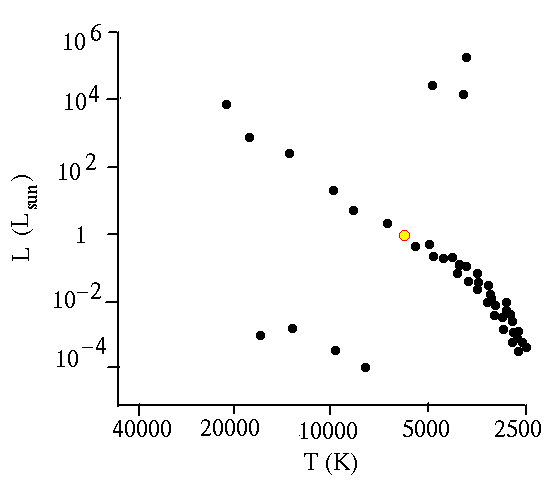
Most stars in the solar neighborhood are fainter and cooler than the Sun. There are also a handful of stars which are red and very bright (called red supergiants) and a few stars that are hot, but very faint (called white dwarfs). We will see in a later lecture that stars begin their life on the main sequence then evolve to different parts of the HR diagram.
Most of the stars in the above diagram fall on a curve that we call the main sequence. This is a region where most normal stars occur. Normal, in astronomy terms, means that they are young (a few billion years old) and burning hydrogen in their cores. As time goes on, star change or evolve as the physics in their cores change. But for most of the lifetime of a star it sits somewhere on the main sequence.
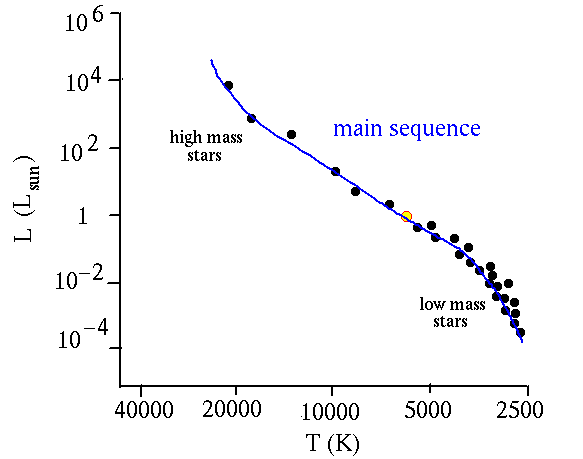
Several regions of the HR diagram have been given names, although stars can occupy any portion. The brightest stars are called supergiants. Star clusters are rich in stars just off the main sequence called red giants. Main sequence stars are called dwarfs. And the faint, hot stars are called white dwarfs.
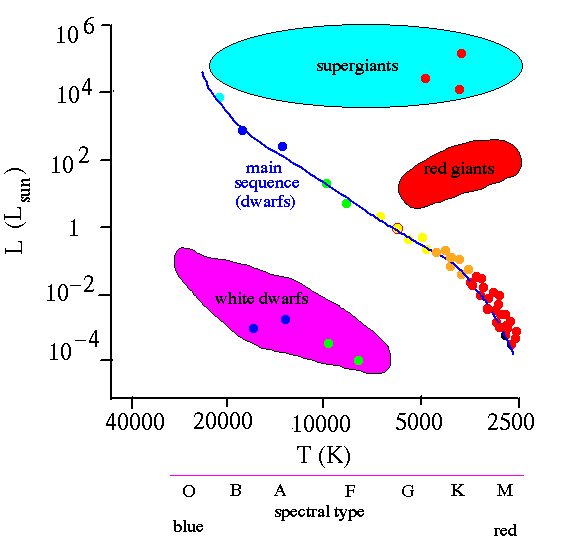
The spectral classification types were more accurate then attempts to measure the temperature of a star by its color. So often the temperature scale on the horizontal axis is replaced by spectral types, OBAFGKM. This had the advantage of being more linear than temperature (nicely spaces letters) and contained more information about the star than just its temperature (the state of its atoms).
The HR diagram becomes a calculating tool when one realizes that temperature, luminosity and size (radius) are all related by Stefan-Boltzmann's law. The standard Stefan-Boltzmann law is for point sources, an idealized case. Real objects have size, which means surface area. Large objects cool faster (emit energy faster) than small objects, so there must be some correlation with radius. For stars, the luminosity, temperature and radius are linked by an expansion of Stefan-Boltzmann's law that says:
This equation can be expressing in terms of solar units such that:
where Lo, Ro and To are the luminosity, radius and surface temperature of the Sun.
Knowing from laboratory measurements that Stefan-Boltzmann's constant is 5.67x10-8 allows one to calculate the luminosity of a star in units of watts (like a light bulb) if we know the radius of the star in meters and the temperature in kelvins. For example, the Sun is 6.96x108 meters in radius and has a surface temperature of 5780K. Therefore, its luminosity is 3.84x1026 watts.
On a log-log plot, the R squared term in the above equations is a straight line on an HR diagram. This means that on a HR diagram, a star's size is easy to read off once its luminosity and color are known.
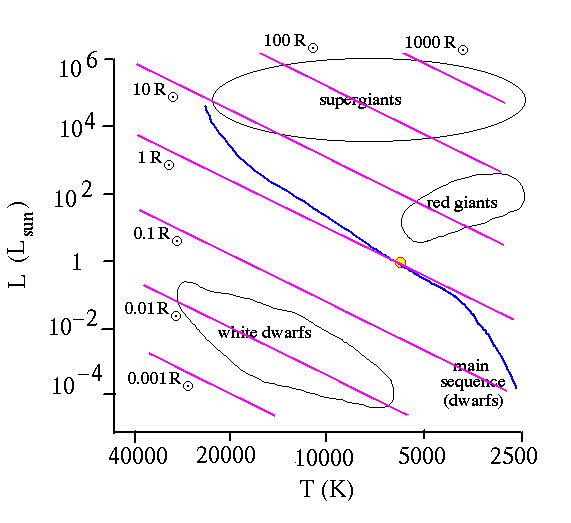
The HR diagram is a key tool in tracing the evolution of stars. Stars begin their life on the main sequence, but then evolve off into red giant phase and supergiant phase before dying as white dwarfs or some more violent endpoint.
Thermonuclear Fusion:
Energy generation is the heart of stars. It provides the energy that we see as light, and it also supplies the heat and pressure that supports a stars' structure. The power source for stars is thermonuclear fusion.
Normally, particles with like charges (positive-positive or negative-negative) repel each other, this is called electrostatic repulsion. But at temperatures above 15 million degrees K, the motions of protons are high enough to overcome the electrostatic forces and the nuclei can ``fuse'' using the strong force.
The primary output from a thermonuclear reactions are photons in the form of gamma-rays, but a large number of other particles are produced as well.


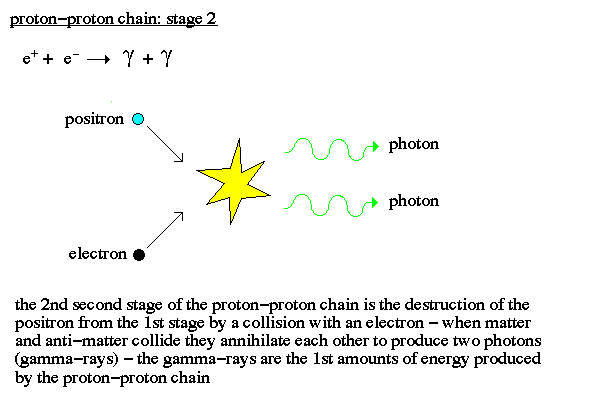
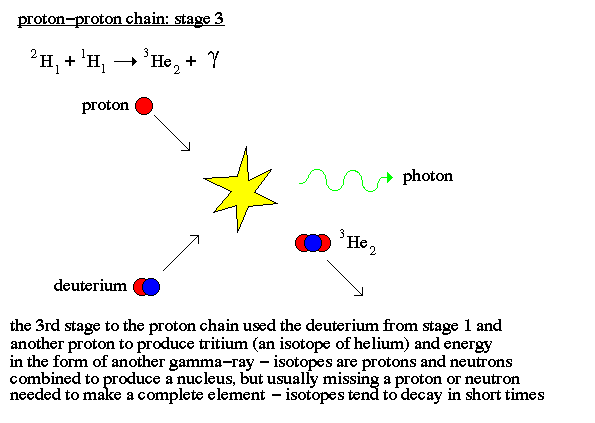
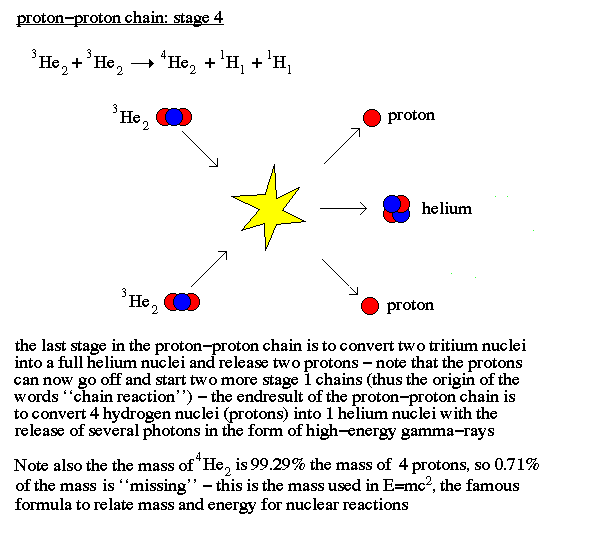
The Neutrino Problem:
During the proton-proton chain, several different types of matter are created from energy and many gamma-ray photons are released. However, due to the high densities in the core of a star, all these objects are trapped in the center and, thus, we can not `see' what goes on inside a star. However, many neutrinos are also created, and the neutrino is a very special type of fundamental particle with no electric charge, a very small mass, and one-half unit of spin. Neutrinos belong to the family of particles called leptons, which are not subject to the strong nuclear force, therefore not stopped by the matter in the core of a star.

Neutrinos are the most penetrating of subatomic particles because they react with matter only through the weak interaction. Neutrinos do not cause ionization, because they are not electrically charged. Only 1 in 10 billion, traveling through matter a distance equal to the Earth's diameter, reacts with a proton or neutron. However, because neutrinos are weakly interacting, they are also just as difficult to detect. Our best neutrino `telescopes' are large tanks of water buried deep underground such as the Super Kamiokande in Japan. Water contains lots of protons in the form of hydrogen atoms.

Neutrinos from a supernova explosion travel at or very near the speed of light and carry a lot of energy. On rare occasions, a neutrino will hit a proton in the tank of water (the more water, the greater the chance). This collision will produce a positron which recoils with such high speed that it emits a brief flash of light known as Cerenkov radiation. The detector tank of water is buried deep in the Earth to eliminate cosmic rays and other interactions that would distort the detection of the neutrinos. Only neutrinos can reach to such depths.
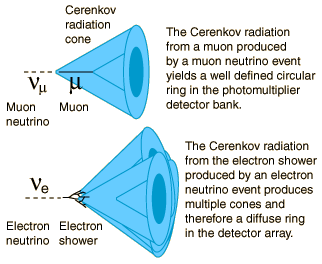
Even though neutrinos are so hard to stop, there are so many of them that it is possible to design detectors. Unfortunately, the detectors detect only a fraction of the number neutrinos they should. This was a major source of concern and confusion for years, and was referred to as the "neutrino problem," or "the problem with solar neutrinos." What does this mean? No one knew for a long time. It could have meant that our ideas about the proton-proton chain need revising, or that there is some unknown mechanism at work that absorbs many of the neutrinos before they reach the Earth. It remained a mystery until fairly recently when astronomers and physicists suggested that the neutrinos may change their characteristics as they travel toward Earth. So when they got to the detectors on Earth, many of the neutrinos had actually changed into a different type other than what the detectors were looking for. Strong evidence for this was announced in June, 2001, and it appears that the "neutrino problem" has been solve.

|
|

|